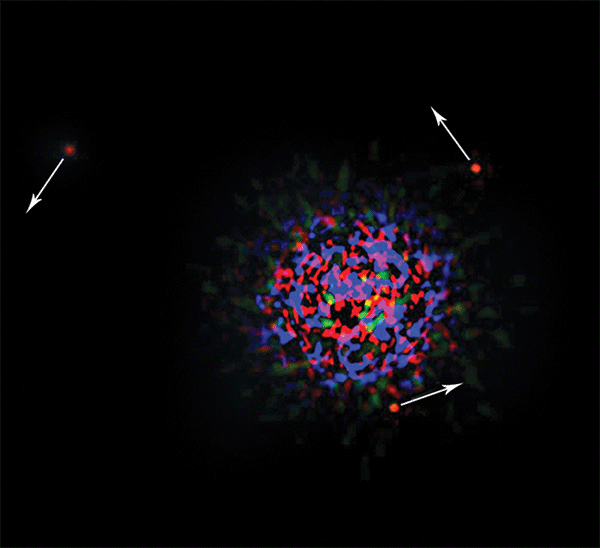Amateur Astronomers Discover a Planet with Four Suns
October 17, 2012
Amateur astronomers have discovered an extraordinary planet–one whose skies are illuminated by four suns. The planet, whose discovery was announced this week at an astronomical conference in Reno, Nevada, was named Planet Hunters 1 (PH1). The name refers to the group of volunteers who study data from the Kepler space telescope that NASA has made available to the public on its Planethunters.org website. Two of those volunteers made the discovery, which was confirmed by professional astronomers.
PH1 is located about 5,000 light-years from Earth. (A light-year is the distance light travels in a year, about 5.88 trillion miles or 9.46 trillion kilometers.) Astronomers believe it is a gas giant, larger than Neptune but smaller than Saturn–about six times as wide as Earth. The planet orbits two of the four stars, circling the pair every 138 days. The two stars orbit each other every 20 days.
The other two stars in the system orbit the first pair, but they are located much farther away from the planet–about 93 billion miles (155 billion kilometers). Those other two stars shine in PH1′s sky at certain times of the year, sometimes at night and sometimes during the day.

Extrasolar planets orbit stars other than the sun. In this infrared image of the star HR 8799, three planets orbit the star. The arrows indicate the directions of the planets’ orbits. (C. Marois et. al/NCR Canada)
Two stars that orbit each other are called binary stars. Many of the stars in our solar system belong to such binary systems. Less common are planets that orbit binary stars. Of the hundreds of exoplanets (planets outside of the solar system) discovered so far, only six have been confirmed to orbit binary stars. PH1 is even rarer yet. It is the only planet ever discovered as part of a quadruple star system.
Additional World Book articles:
- Astronomy
- Kepler, Johannes
- Star
- Telescope
- Astronomy 2011 (Back in Time article)
- Space exploration 2009 (Back in Time article)


